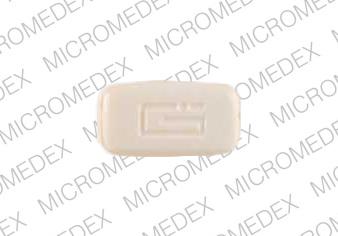Pergolide Dosage
Applies to the following strengths: 0.25 mg; 0.05 mg; 1 mg
Usual Adult Dose for:
Usual Pediatric Dose for:
Additional dosage information:
Usual Adult Dose for Parkinson's Disease
Pergolide was voluntary withdrawn from the US market by the manufacturer in March, 2007 due to increased reports of serious heart valves damage. The following dosage information applies to when the drug was available in the U.S.
Initial: 0.05 mg orally once a day for the first 2 days.
Maintenance: Gradually increase in increments of 0.1 to 0.15 mg every third day over the next 12 days. Then increase by 0.25 mg every third day until an optimal dosage is achieved. The daily dose is usually divided into 3 to 4 doses/day. The average dosage is 3 mg/day. Doses above 5 mg/day have not been studied.
Usual Adult Dose for Hyperprolactinemia
Pergolide was voluntary withdrawn from the US market by the manufacturer in March, 2007 due to increased reports of serious heart valves damage. The following dosage information applies to when the drug was available in the U.S.
Initial: 0.05 mg orally once a day.
May be increased in increments of 0.025 to 0.05 mg as needed to control prolactin levels.
Most patients respond to 0.1 mg orally once a day.
Usual Pediatric Dose for Tourette's Syndrome
Pergolide was voluntary withdrawn from the US market by the manufacturer in March, 2007 due to increased reports of serious heart valves damage. The following dosage information applies to when the drug was available in the U.S.
Study (n equals 18), 1 month duration:
8 to 17 years: initially 25 mcg/day, 2 to 3 days later the dose was titrated to 50 mcg three times daily, then titrated upwards every 3 days by 50 mcg per dose to a final dose of 150 mcg three times daily. The maximum dose used in 4 patients was 300 mcg three times daily.
Renal Dose Adjustments
Data not available
Liver Dose Adjustments
Data not available
Dialysis
Data not available
Other Comments
The addition of pergolide to the therapy of patients with Parkinson's Disease allows for a reduction in levodopa/carbidopa dosage in most patients and a decrease in "off" time. The long duration of action of pergolide decreases wearing-off or end-of-dose effects of levodopa. The dosage of levodopa/carbidopa may be cautiously reduced during pergolide therapy. Limited data suggests the clinical benefit of pergolide may peak between 6-12 months, and decrease thereafter. Some patients have shown clinical benefit from pergolide for up to 7 years.
More about pergolide
- Check interactions
- Compare alternatives
- Drug images
- Side effects
- During pregnancy
- Drug class: dopaminergic antiparkinsonism agents
Patient resources
Professional resources
Related treatment guides
See also:
Further information
Always consult your healthcare provider to ensure the information displayed on this page applies to your personal circumstances.


